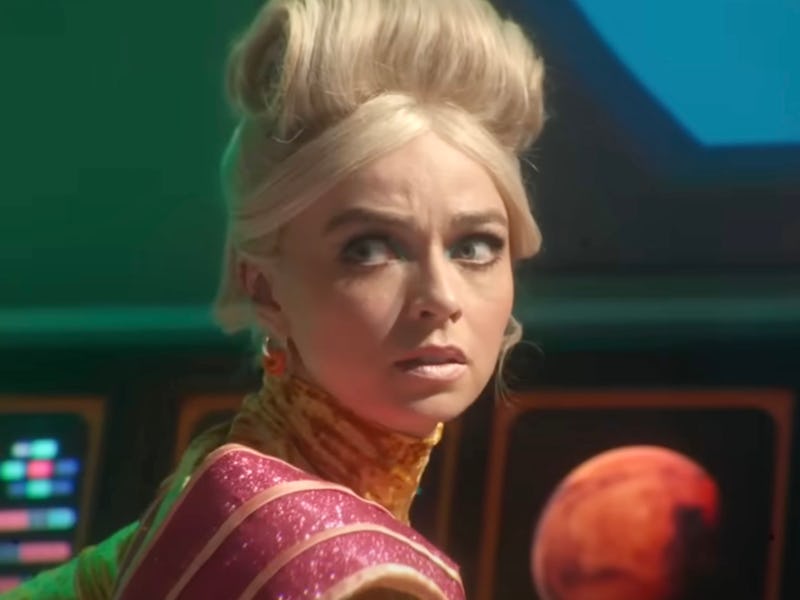In Star Trek: Strange New Worlds Season 3, there’s a very real possibility that we’ll be getting a metafictional version of Star Trek: a Star Trek show that exists within Trek canon. The newest trailer gives us glimpses of Kirk (Paul Wesley), Chapel (Jess Bush), and Ortegas (Melissa Navia) in an anachronistic 1950s version of The Original Series, while a voiceover suggests this is some form of in-universe entertainment.
So what’s going on here? Does Strange New Worlds have more than one holodeck malfunction episode? Is this the current Trek’s answer to Black Mirror’s “USS Callister?” Is Star Trek going full Galaxy Quest? The answer might be somewhat more elegant, and it goes all the way back to 1979.
Although Lower Decks has suggested that there are popular dramatizations of famous Starfleet missions in the 24th century, the idea of the Enterprise crew’s adventures being adapted comes from Trek creator Gene Roddenberry himself. Roddenberry’s 1979 novelization of Star Trek: The Motion Picture begins with a preface from Admiral James T. Kirk and presents the novel as an in-universe document attempting to set the record straight about the V’Ger incident. Kirk mentions that Starfleet allowed their famous five-year mission to be “chronicled,” which resulted in the crew being “all painted somewhat larger than life, especially myself.”
This suggests that a truer but unknowable version of Kirk exists outside of The Original Series, and that the show’s point-of-view comes from a Watsonian 23rd-century figure named Roddenberry. After Kirk’s preface, the novel has a second preface from the author, a version of Roddenberry who was “a key figure among those who chronicled his original five-year-mission...”
All of this is in good fun, but it’s notable because the release of The Motion Picture was a huge pivot point for Trek canon. The Klingons suddenly looked different, and the planet Vulcan now had some moons, among other changes. Visually and tonally, The Motion Picture was, at least according to Roddenberry at the time, closer to what the series was supposed to feel like.
Paul Wesley in 'Strange New Worlds' Season 3.
The aesthetic of Strange New Worlds will never match The Original Series, given the many decades between their releases, but perhaps, from a certain point of view, TOS isn’t strictly canon. Yes, those adventures happened, but maybe, as Roddenberry suggested in 1979, the episodes were hyperbolic adaptations. On some level, any Star Trek episode that contains a Captain’s Log reflects a tension between the recorded events and the dramatization we’re seeing. At the end of The Motion Picture, Kirk falsifies the logs to say Decker and Ilia are “missing.” So are we seeing a dramatic reinterpretation of a Starfleet mission, complete with the revelation that Kirk is lying?
Star Trek has played with point-of-view and metafiction before. The Voyager episode “Author, Author,” for example, revealed that the Doctor (Robert Picardo) had released a successful holonovel that fictionalized the crew in ways both reasonable and absurd. But to stretch this conceit to its limit, it’s possible that the entire Original Series was a shared cultural experience in-universe. And if Strange New Worlds reveals that an in-universe version of Star Trek is being created in 2261, this would actually smooth out canon problems, not create more of them. If Star Trek inside of Star Trek is canon, then the larger sweep of the Trek mythos will suddenly feel a lot less constricted.
